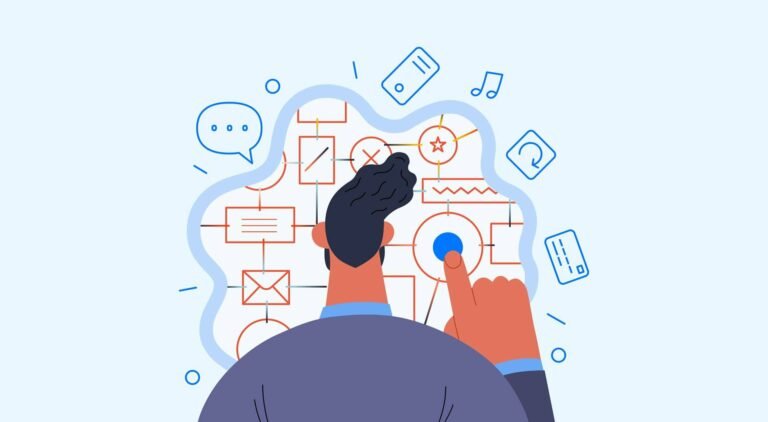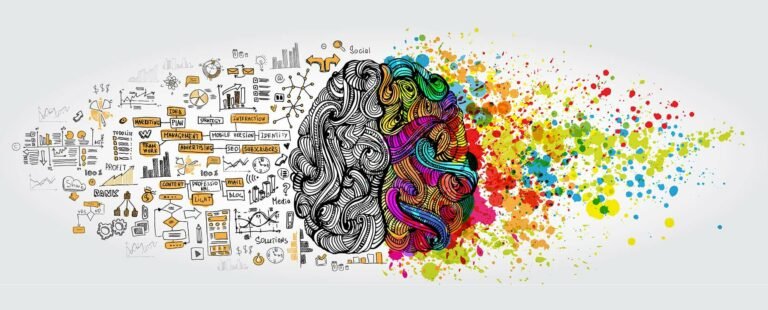Content Creation for Modern Learning
The business world is going through a digital transformation, and no sector remains unaffected. L&D departments are no exception. Due to recent technological breakthroughs and changes in learner preferences, you can no longer structure training content using macrolearning or other outdated methods. This requires businesses to reinvent content creation for modern learning. Only with a modern strategy can you expect your team members to adopt new skills critical to your company’s growth.
In this entry, we’ll discuss the basic principles of creating content for contemporary corporate training.
What Does Proper Learning Material Include?
Gone are the days when employee training relied on tedious two-hour-long lectures. Millennials have taken over the workplace, and mobile learning has significantly expedited the whole process. Consequently, businesses from all over the world have embraced a new approach to staff skill development. Here’s what it looks like:
Convenient and Easily Accessible Content
Today’s workplace is a dynamic environment. Norms and regulations are constantly evolving, which is why your employees have to keep up with all the changes. Therefore, organizations should fuel their learners’ need to learn regularly and rapidly.
To that end, most training sessions consist of aggregated and curated content. This method ensures that all necessary knowledge is in one place and highly relevant to the learners’ needs.
Such modules also empower people to come up with individual learning paths. The administrators provide a design and technological framework, but it’s up to the trainees to explore and customize their experience. For instance, an optimized LXP (Learning Experience Platform) allows the participants to skip sections they don’t wish to take. This puts the learner in control since materials aren’t foisted upon them.
Ample Personalization Options
Modern learning platforms emulate Netflix and Amazon in many aspects, including personalization. These systems allow users to select content according to their preferences and previous interactions. Hi-tech workplace training solutions follow the same principle.
Employees expect many things from their learning sessions, but flexibility and the ability to choose are the highest priorities. Telling them what to practice and how to do it deters them from acquiring skills. If they can select the preferred material and how to absorb it, they’ll feel empowered during their training. This, in turn, improves the chances of knowledge retention.
Another feature of modern courses is an organic learning environment. For example, polished platforms pique the trainees’ interest by letting them review and rate modules. They also promote peer learning through Facebook or other social media.
Learning Available Anytime, Anywhere
Adults highly appreciate the opportunity to learn whenever and wherever they want to. Accordingly, training sessions shouldn’t be scheduled during work hours only. People don’t like to leave more important desk duties to take a course, especially if they’re urgent. Instead, materials should be provided at their convenience with on-demand learning.
This is crucial to engaging your employees and making them feel empowered. There are many ways to accomplish empowerment:
- Implementing mobile learning – Trainees require instant information they can access on the fly. Mobile learning meets this need perfectly.
- Create fluff-free and relevant content – Background company information is often superfluous. That’s why most modern courses jump to job-specific skills, engaging the learner from the get-go.
- Developing searchable content – The search function lets employees return to previous modules and revise.
- Ensuring compatibility – E-learning platforms usually work with multiple devices, such as cell phones and desktop computers. This way, people can access learning content using their preferred machine.
Providing Interactive and Exciting Content
Most companies, including banking, finance, and insurance institutions, have to perform compliance training. It ensures the entire team is brought up to speed with the recent developments crucial to numerous areas.
But these sessions are often dull, which is why workers may tune off and miss vital sections. To prevent this scenario, incorporating media and room for interaction is imperative. There are many established practices that achieve audience engagement:
- Using videos and images whenever possible – They shouldn’t be employed only to reinforce written lessons. In some cases, they can replace them altogether.
- Adding quizzes and questions between topics to maintain interest and engagement.
- Assigning “homework” to allow learners to apply the training materials in a meaningful way.
- Sprinkling statistics, trivia, and thought-provoking research.
- Gamification modules.
Adopting Design Thinking
Design thinking puts the learner first in any learning environment. The whole experience is created with special attention to the participants’ needs. This makes for intuitive, experiential sessions that fully immerse the trainees. The chances of greater knowledge retention are also higher.
What is more, the design thinking strategy isn’t restricted by its content studio. The approach can leverage brand-new technology to provide better collaboration, social learning, shareability, and accessibility. Overall, it helps create a sustainable employee development culture.
Integrating User-Generated Content (UGC)
UGC is any type of content (video, image, review, slide deck, etc.) created and delivered by learners. The technique has quickly risen to prominence since it rapidly improves activity and engagement from otherwise passive audiences. It fosters a knowledge-based environment, where users can make a genuine contribution and become immersed in the training experience.
By having all participants pitch in with their content, they can facilitate the conversation without L&D admins having to steer them. It’s a great way to elicit enthusiasm and creativity from your employees by welcoming additional input.
Some of the best-known forms of UGC include:
- Q&A blogs and forums
- Tweets
- Photographs
- Videos
Incorporating Microlearning
People are no longer fond of traditional learning styles that consisted of a lecturer and a bunch of words on a blackboard. The preferred method for today’s employees is microlearning. During microlearning sessions, training content is delivered through small information chunks. These chunks are organized in standalone modules that last up to 10 minutes and address one learning goal at a time.
This approach is perfect for new-age learners with short attention spans. With bite-sized modules, they are more likely to memorize the materials presented and pick up new skills.

Keep Up With the Future
Adapting to the ever-changing workplace requires you to manage a huge number of business areas. One of them is the transforming content delivery for modern learning.
To make sure your employees are equipped with adequate training materials, integrate with Learnsure. Our streamlined platform has all you need for efficient workforce skill development, including an intuitive interface and a wide range of modules. Check out our services and see how we can help prepare your staff for future challenges.


